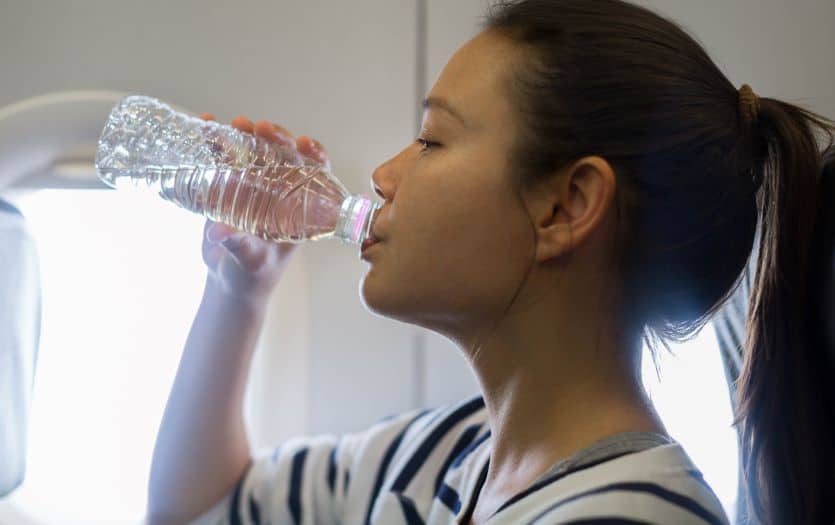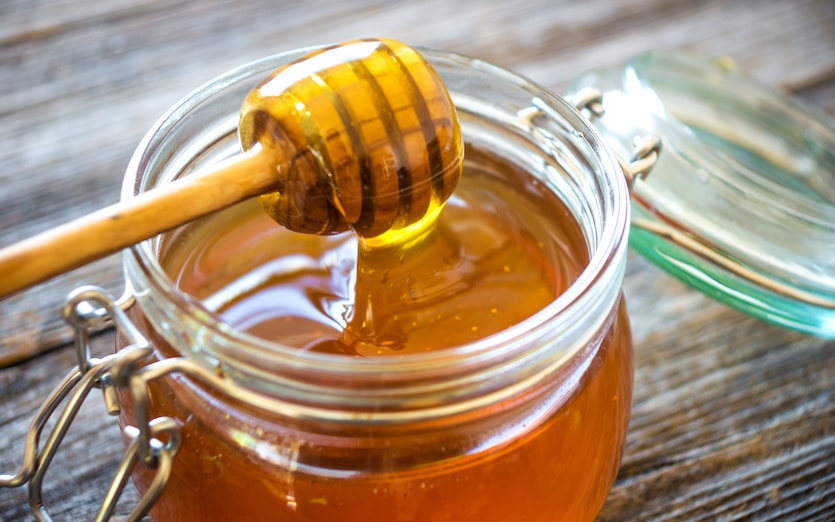Travel with family means a lot of baggage—literally and figuratively. It’s enough to deal with the regular stress of making sure everyone packed the right clothes, has their tickets and identification, are properly fed, and not actively crying. The last obstacle you need thrown in is a health challenge of any kind.
There’s no sure-fire way to avoid illness and injury while traveling. But there’s good news: you can take certain steps to help you and your family stay safe and healthy on your next adventure. All it takes is a little bit of planning. So before your next vacation or road trip, utilize the family travel tips you’ll read below.
Prevention is the Best Medicine: Preparing Your Family for Travel
Before embarking on a trip with your family—whether it’s a short road trip or a transoceanic flight—it’s important that everyone is already healthy. If you (or your children) haven’t been to the doctor for a checkup in a while, it’s a good idea to go in for an appointment before any major travel. This is especially true if your upcoming travel will take you into remote areas or countries with developing healthcare infrastructure.
Additionally, traveling—especially to a new country—can expose you to different diseases and put you at greater risk for contracting various illnesses. Thanks to modern medicine, numerous vaccines are available to help protect you. Before traveling abroad, it is important that you and your family are up to date on your vaccinations. Your doctor may also recommend additional vaccinations or prescription medications to further protect your health. Because many of these prescriptions require several days to operate effectively, plan ahead and consult your doctor as early as possible.
If you are traveling with young children, there is a chance they will not have completed their routine vaccinations. Before going on your trip, be sure to talk to their pediatrician. In some cases, the doctor may recommend a slightly accelerated vaccine schedule for your child or advise against travel entirely.
What to Bring to Keep the Family Healthy While Traveling
You’ve booked your tickets, planned your route, secured accommodations, and consulted your family doctor. Now it’s time to pack. Everyone will need to bring appropriate attire for the trip, but some other travel essentials may be less obvious. Check off items on the list below to make sure you have your family’s health essentials covered.
- Sunscreen: Sun exposure is nearly impossible to avoid. If you go outside, you’re going to catch some rays. But there’s also a downside to sun exposure: sunburns, dehydration, and—in intense heat—heatstroke.
To protect your skin from the damaging effects of the sun’s rays, it’s important to wear sunscreen throughout the day. If you’re out in the sun for extended periods of time, remember to reapply your sunscreen every few hours. Otherwise, you might run the risk of a nasty sunburn! - Medications: Naturally, if there are any medications or prescriptions you or other family members take on a regular basis, you should pack them when you travel. You should also bring emergency medications—such as those prescribed for acute anxiety or EpiPens—if there is any chance you’ll need them.
Certain medications may have restrictions on how much you can travel with, so do your research beforehand. It’s also a good practice to bring documentation for your prescriptions. You might not need it, but if someone starts asking for proof, you’ll be glad you packed it! - Water Bottles: Dehydration is one of the most frequent health challenges people face. Fortunately, it also has one of the easiest solutions: drink more water. There are several ways to keep you and your family hydrated (more on that later), but a great starting point is packing water bottles. If you’re flying, remember that you won’t be able to bring liquids through security in some countries—so pack reusable bottles and fill them once you’ve made it past the checkpoints.
- Healthy Snacks: Food is fuel—it gives your body the energy it needs to perform essential functions on a day-to-day basis. Nutritious food can help you feel satisfied, energized, and can even support quality sleep. And all these things are important while traveling.Most of your food intake, even when you’re on the road, should come from full meals. (If you’re looking for tips to eat healthy while traveling, check out this article!) That being said, it’s not always possible to sit down and enjoy a meal. Sometimes you need a snack to hold you over for a few hours.
As you pack snacks for your trip, your focus should be nutrition. High-protein foods and whole grains will leave you feeling full and energized for longer than sugary, processed foods. If any family member experiences motion sickness—either in a car or on a plane—pack bland foods that are easy to keep down. These will come in handy if you or one of your kids is feeling nauseous but still needs to eat. - Protective clothing: Clothes can protect you from your environment—whether that’s toxic plants on a hike or temperatures well below freezing. As you plan for your trip, consider the environmental factors you might face. Will it be hot? Cold? Raining? Your wardrobe choices should reflect the environment and weather.While it can be fun to buy new clothes for vacation, it’s also a good idea to bring along some old, reliable outfits—those you know you can walk in comfortably for several miles. There’s nothing worse than gearing up for a day of exploring a new place, only to have your clothes chafe or tear.
Hydration on the Go for You and Your Kids
When it comes to healthy travel (and health in general), it’s hard to overstate the importance of water and hydration. Water seems to do it all for keeping your body running smoothly. So getting inadequate amounts of liquid can cause all sorts of health difficulties.
Staying hydrated at home can already be a challenge—and, when you’re on the road, it doesn’t get any easier. This means hydration should be a priority when you travel with family. There are many ways to ensure everyone stays hydrated, and your approach will probably depend on how you’re traveling.
- Hydrating on planes: The prohibition on bring bottles of water through airport security can pose a problem for people trying to stay hydrated without paying ridiculous airport prices for a bottle of water. Fortunately, there’s an easy solution: pack reusable water bottles for every member of your family. Once you’re through security, you can fill them at a water fountain and bring them on your flight.
Once on the plane, your water supply can be limited. You can’t just fill the bottle up at a fountain. To avoid getting dehydrated, especially on long flights, limit the amount of alcohol and caffeine you drink. Replace it with plain water instead. - Hydrating on road trips: Nothing says summer like a multi-day road trip. Traveling by car isn’t the fastest option out there, but it does give you the ability to bring a lot more with you. And when it comes to hydration, this is a plus. Reusable water bottles are still a great option for road trips, but you should also have a large supply of emergency water in your trunk. Long car rides can take you through remote areas, so if the car breaks down, you’ll need enough water to keep everyone hydrated until help arrives.
It might seem counterintuitive, but your water intake doesn’t have to only come from water. You can also help keep your body hydrated by eating foods with a high water content. A cooler full of watermelon, oranges, or pineapple chunks makes for a healthy, hydrating snack on a road trip.
Bring Everyone into the Travel Conversation—Even Your Kids
You know your body and your needs better than anyone else. Similarly, you know what keeps you feeling your best mentally and physically. The same is true of your partner, your children, and anyone else you may travel with. You can only do so much planning and preparation for other people’s health—at a certain point you’ll need to bring them into the conversation.
As you prepare for your trip, talk to your kids. Ask them what you can bring that will help them feel relaxed, comfortable, and happy. This could mean packing an extra book, a tablet for movies and games, or music they want to hear on the trip. Try to pack snacks that are nutritious, but well-liked by your travel buddies.
And, of course, don’t forget to take care of yourself and have fun. Looking out for everyone else’s health is exhausting. Ask yourself what you’re doing for your health. Take time to practice self-care and kick back a little bit—after all, travel and vacation should be a time to blow off a little steam.
References
https://kidshealth.org/en/parents/family-travel.html
https://travelmamas.com/how-to-stay-healthy-traveling-kids/
https://wwwnc.cdc.gov/travel/page/children
https://www.penguinpediatrics.com/blog/7-tips-for-keeping-your-kids-healthy-during-holiday-travel
https://www.betterhealth.vic.gov.au/health/healthyliving/travelling-with-children










 Momentum can make you nearly unstoppable. One healthy decision can pave the way for more smart choices. But rolling through your wellness goals requires you to set the ball in motion.
Momentum can make you nearly unstoppable. One healthy decision can pave the way for more smart choices. But rolling through your wellness goals requires you to set the ball in motion.












